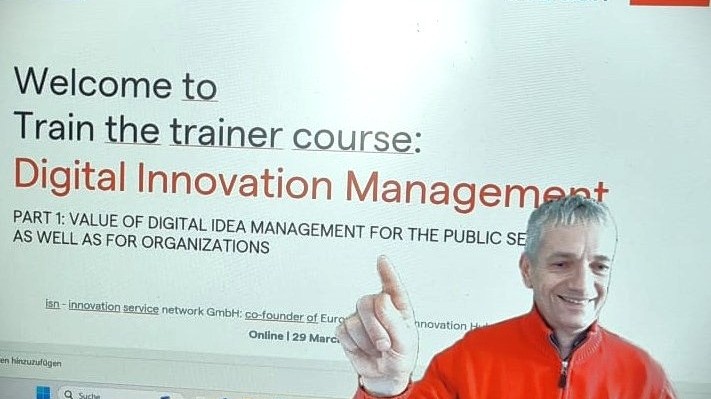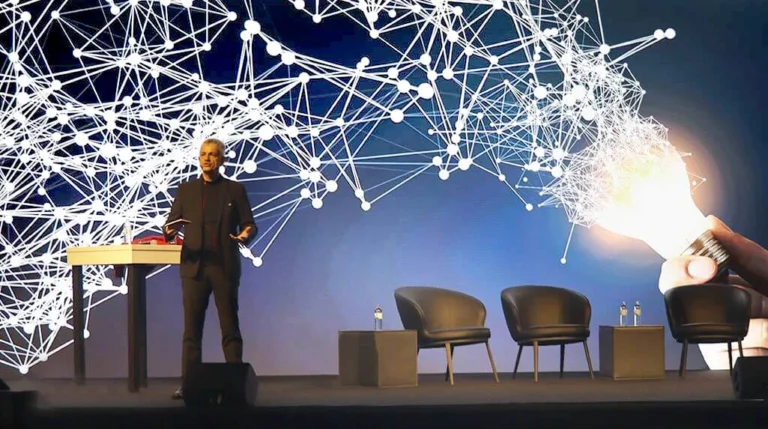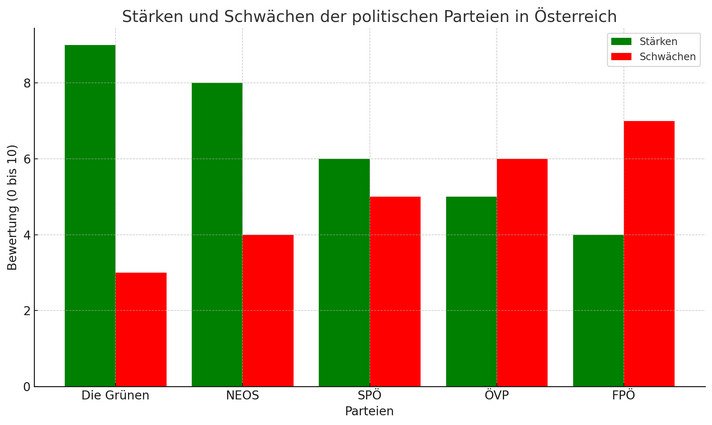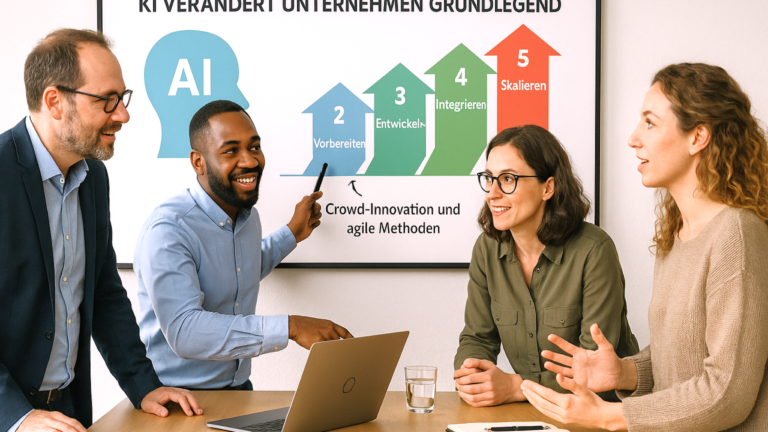
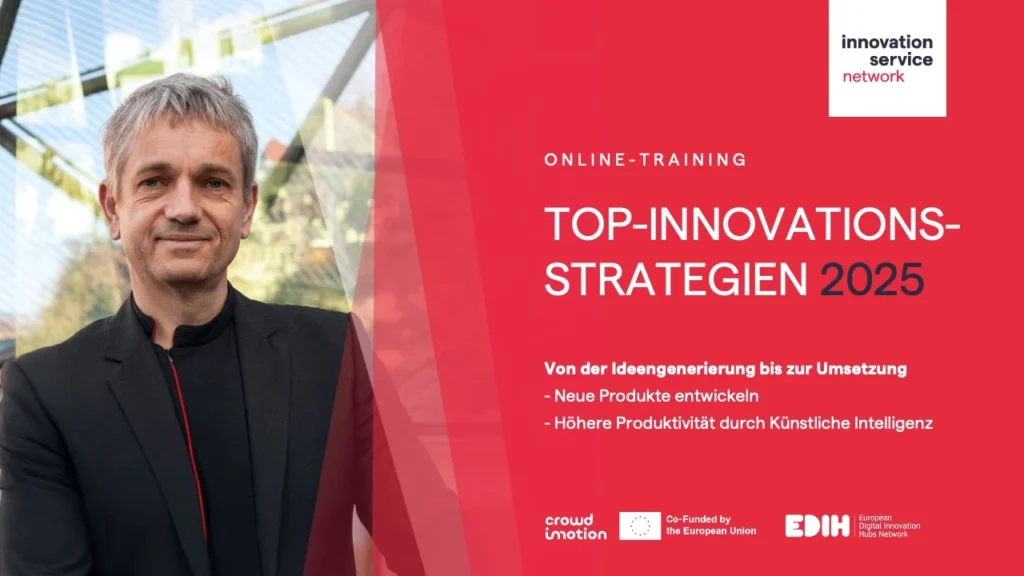
Gabriel Felbermayr described the current challenge of budget consolidation for the Austrian state very aptly with an analogy from rally driving: ‘Left-foot braking’ is the order of the day!
With left-foot braking, you brake with your left foot (which is normally taboo!) and at the same time keep your right foot on the accelerator. The result: the rear axle breaks away in a controlled manner and you drift through the bend with more speed!
Applied to companies, the aim is to invest in the future and create new value, while at the same time making savings without losing employees and expertise. The aim must be to achieve sales stability again as quickly as possible by creating new value. The ‘drift’ must therefore not last too long and must quickly lead to a significant increase in speed (company performance) after the curve.
It's about tackling change with all the minds in the company. Innovation concerns everyone and with the right methods and tools, a stable state can be achieved more quickly. Innovation leadership is required! Managers must take the innovation risk and plan new paths. Waiting for the economy to recover automatically will not work this time, and successful companies have used this idle time in the past to drive innovation forward.
What leaders need to know and consider: If you let your company drift into a curve, the associated change must ultimately have something to do with the market! Resources are scarce and things have to happen quickly. A ‘technology push’ strategy is too risky. It is best to take the path together and in close interaction with customers and to focus on maximising customer benefit. Early feedback reduces risk and delivers mature solutions faster. The isn crowdinnovation method, in combination with a digital innovation platform, delivers precisely this effect.
In recent years, many companies have chosen to specialise in a niche. As a result, Austria has quickly become too small a market and we have also had to learn to master the path of internationalisation on a global market. The developments and crises of recent years have made Austria a very expensive location.
Conclusion: As a company, we must pay particular attention to ensuring that we present our excellent expertise in the right light and raise the attractiveness of our services and solutions to a unique level. In a knowledge-intensive value chain, the handling of knowledge and knowledge productivity must therefore take centre stage. There is hidden knowledge in every company that is not being utilised. Transparency, networking, co-operation and optimal tools for knowledge work are needed.
Innovation management, for example, is about combining the knowledge of customers with the knowledge of developers. Working on a prototype for a new product and receiving feedback from selected customers in parallel via a digital innovation platform reduces the innovation risk.
Output: The solution is perfectly tailored to the customer's benefit and the new solution or service is brought to market more quickly. Innovation management must be perfected in every company in order to reduce the risk of change and at the same time be able to react quickly to market requirements and new technologies.
Knowledge productivity can be further increased with AI (artificial intelligence) tools. By the end of 2025, digital AI assistants will be in use in many work processes. AI is thus coming of age and provides a real opportunity to get the cost situation at the site under control again. The range of tools and assistance systems is already much greater than the hype surrounding chat GPT shows. The open source community has been working on solutions that have already reached a high level of maturity. Advantages: lower costs and own data sovereignty.
There is no more time to lose in building up knowledge about the use of AI assistance systems. The power of AI has increased by leaps and bounds due to increased data volumes and higher IT performance. Those who do not enter this field now will suffer further disadvantages in a global market and will soon look rather old. We need to mobilise the opportunities offered by AI in companies quickly and use it to usher in a new form of knowledge work. Every company can use it to raise its own expertise and performance to a higher level.
Wichtig: Die Einführung von KI ist kein IT-Projekt! It is about a collective innovation process in the company that needs to get everyone's heads‘smoking’.AI will dramatically change our ability to network knowledge, be more creative and automate tasks. So anyone who thinks they can continue to wait until the hype is over could soon find themselves in trouble.
Is wait-and-see a possible strategy?
No - we need AI leadership and a clear strategy for utilising AI in order to sustainably increase our competitiveness.
Can the whole thing be stopped and reorientated?
At this point, I would like to quote my dear colleague Professor Bruno Buchberger : ‘Immerse yourself in the new world of AI and enjoy the speed’🙂
For all those who missed the New Year's post in the expert forum, here is the article.
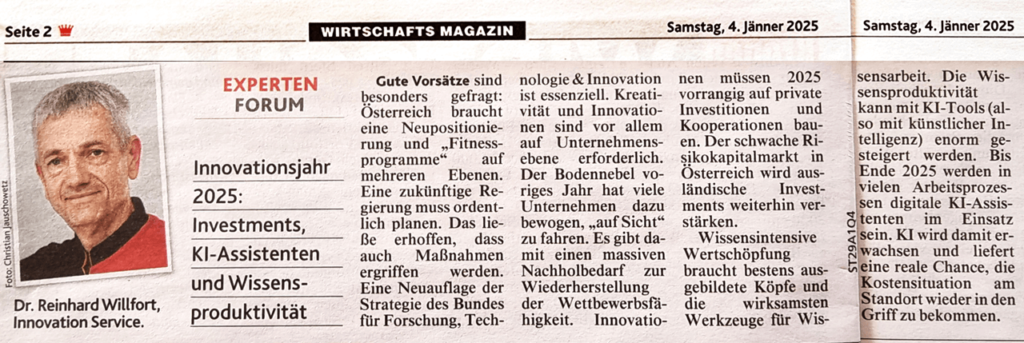
All the best for 2025 and many innovations! I look forward to your feedback and wish you a relaxing Sunday!
Reinhard Willfort, Innovation Doctor, www.willfort.at
Let’s innovate together!
I am happy to offer further support for innovation projects as an Innovationdoc, sparring partner and thought collaborator.
The “Laufend-kreativ” format is based on the ideas from this newsletter and provides an opportunity to reflect on your own positioning or tackle specific tasks with me personally in nature. Book your free innovation consultation now!


